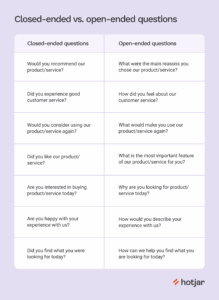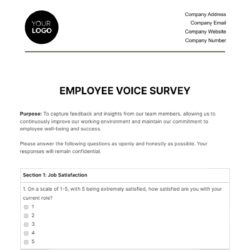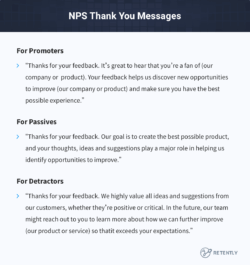Ever wondered how to truly get inside your customers’ minds or understand what your employees are really thinking? Sometimes, multiple-choice questions just don’t cut it. They box people into predefined answers, often missing out on the rich, nuanced insights that truly drive understanding and innovation. That’s where open ended questions come into their own, allowing respondents to express themselves freely and share perspectives you might never have considered.
Diving deep into qualitative data can unlock a treasure trove of information, revealing underlying motivations, unexpected pain points, and brilliant suggestions. The challenge, however, often lies in structuring these inquiries effectively and then making sense of the diverse responses. But don’t worry, creating a well-designed open ended question survey template can make this process far more manageable and ensure you capture the most valuable feedback.
Unlocking Deeper Insights with Open Ended Questions
When you ask an open ended question, you are essentially inviting a conversation. Unlike a simple yes or no, or a selection from a list, these questions encourage respondents to elaborate, explain, and share their unique experiences in their own words. This qualitative data is incredibly powerful because it provides context, emotion, and often, the “why” behind people’s choices and behaviors. It moves beyond mere statistics to give you a human perspective, which is invaluable for making informed decisions, whether you’re improving a product, refining a service, or enhancing workplace culture.
Consider the difference between asking “Are you satisfied with our customer service?” and “Could you please describe your recent interaction with our customer service team and how it made you feel?” The former gives you a percentage, while the latter provides anecdotes, specific feedback about agents, processes, and emotional responses. This level of detail allows you to pinpoint exact areas for improvement, celebrate what’s working well, and develop solutions that truly resonate with your audience. It helps you understand not just what happened, but the full story.
Crafting Effective Open Ended Questions
The key to getting great insights from open ended questions lies in how you phrase them. You want to invite detail without being leading or overwhelming. Think about what specific information you’re trying to gather and structure your questions to encourage thoughtful, comprehensive answers. Avoid jargon or overly complex language. Keep it simple, clear, and focused on eliciting genuine opinions and experiences. The goal is to make it easy for someone to tell you their story.
Here are a few pointers to help you craft questions that yield rich data:
- Start with “How,” “What,” or “Why”: These words naturally invite explanation and description.
- Be specific but not restrictive: Guide the respondent towards the topic without limiting their response.
- Avoid leading questions: Don’t imply a desired answer; let the respondent express their true feelings.
- Keep it concise: Long, convoluted questions can be confusing and deter thoughtful responses.
- Allow for unexpected answers: The best open ended questions often reveal insights you hadn’t even considered.
Remember, the goal is to open up a dialogue, not to guide them to a predetermined endpoint. An effective open ended question survey template is designed to facilitate this natural flow of information, ensuring you get the most out of every response. This data can then be analyzed for themes, patterns, and direct quotes that can be incredibly compelling in reports and presentations.
Designing Your Practical Open Ended Question Survey Template
Now that we understand the power of open ended questions, let’s talk about putting together a practical open ended question survey template. This isn’t just about listing questions; it’s about creating a structured tool that streamlines both the data collection and analysis processes. A good template will consider the flow of questions, the context in which they are asked, and how the responses will ultimately be used. Think of it as your blueprint for discovery.
Your template should begin with a clear objective. What do you want to learn? For whom is this survey? This upfront clarity will guide the types of questions you include. For instance, a template designed to gather feedback on a new software feature will look very different from one aimed at understanding employee morale. Starting with a purpose ensures every question serves a specific information-gathering need.
Consider the user experience when building your template. Is it easy to navigate? Are the instructions clear? Even with open ended questions, too many in a row can lead to survey fatigue. Balance them with perhaps a few demographic questions or even some rating scales if they help provide context, but ensure the core open ended questions are prominently featured and logically grouped. You want to make it as effortless as possible for someone to share their valuable insights with you.
Finally, think about how you’ll analyze the data you collect. A good template implicitly considers the analysis phase. While open ended responses require qualitative analysis (looking for themes, categories, and patterns), having a consistent structure in your questions will make this process significantly easier. You might even include sections within your template for pre-categorization or tags, guiding your eventual data synthesis. The more organized your template is, the smoother the journey from raw data to actionable insights will be, transforming scattered thoughts into clear, compelling narratives.
By thoughtfully structuring your inquiries and providing ample space for respondents to share their detailed thoughts, you’re not just collecting data; you’re fostering a deeper understanding. The insights gained from such rich feedback can be transformative, leading to better decisions and stronger connections with your audience.
Embracing these types of questions within your research strategy will undoubtedly lead to a richer, more nuanced understanding of your audience, customers, or employees. The effort invested in crafting a thoughtful template will pay dividends in the quality of the insights you uncover, allowing you to move forward with confidence and clarity.



